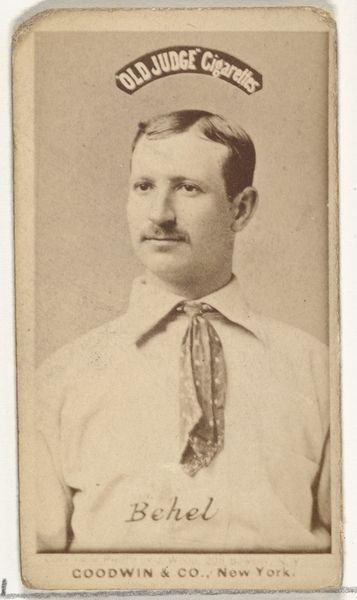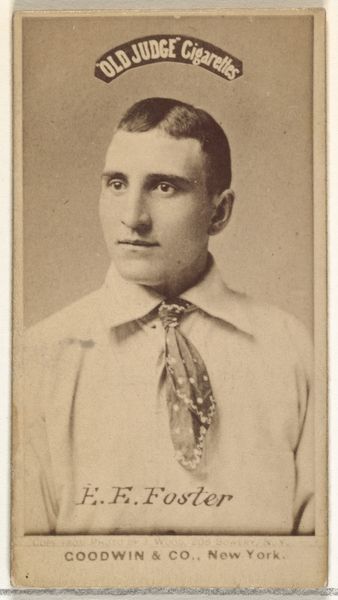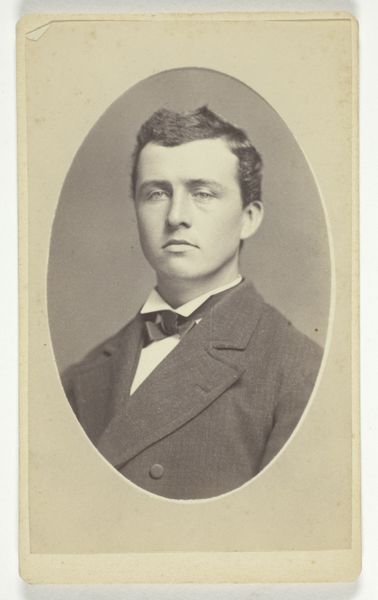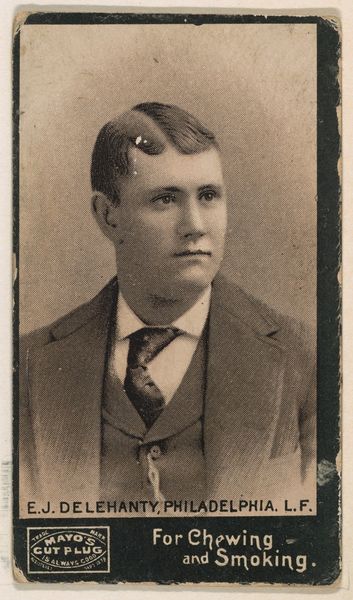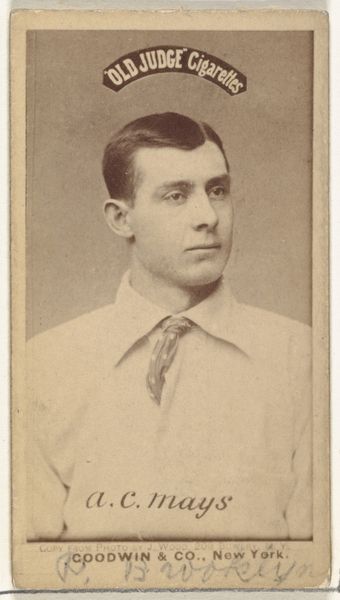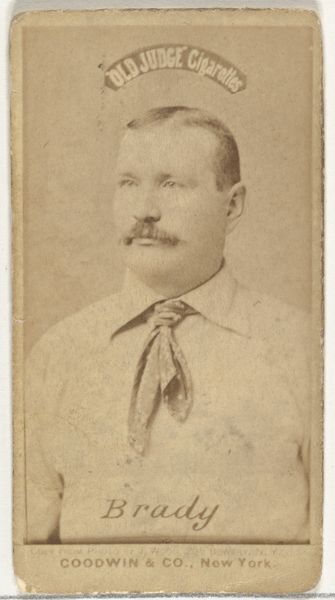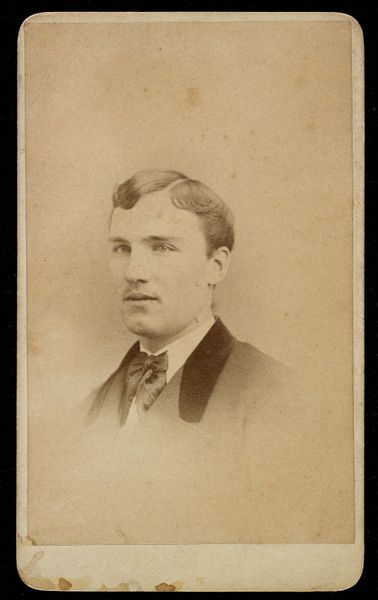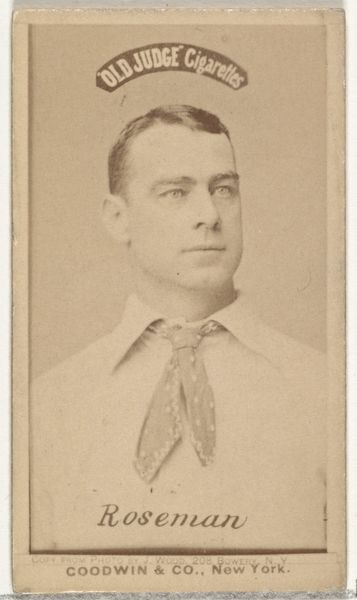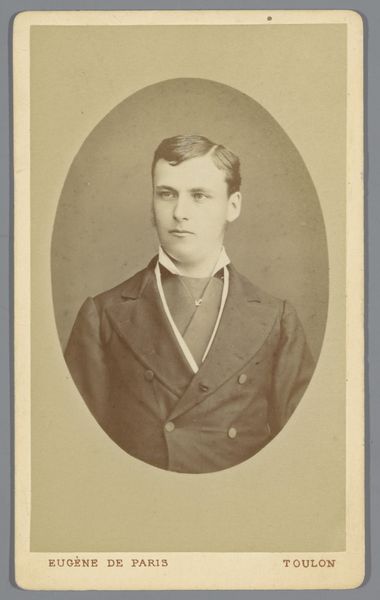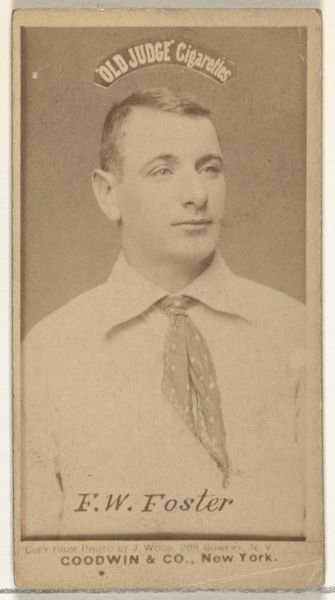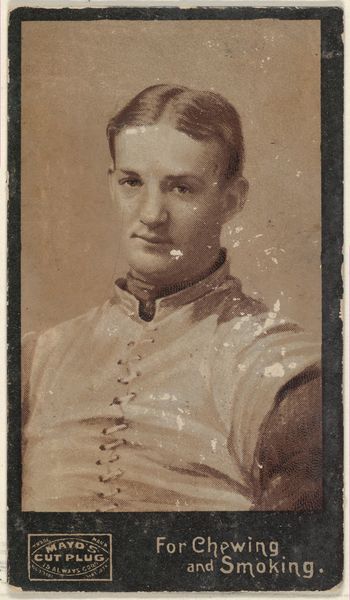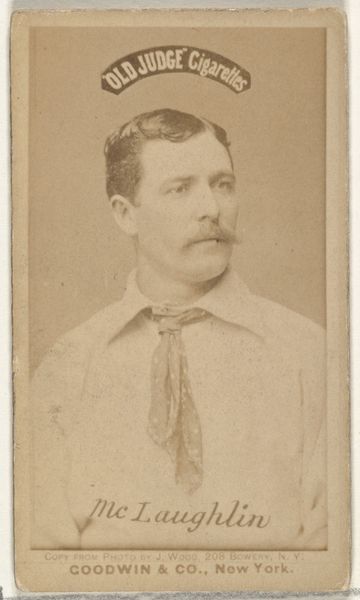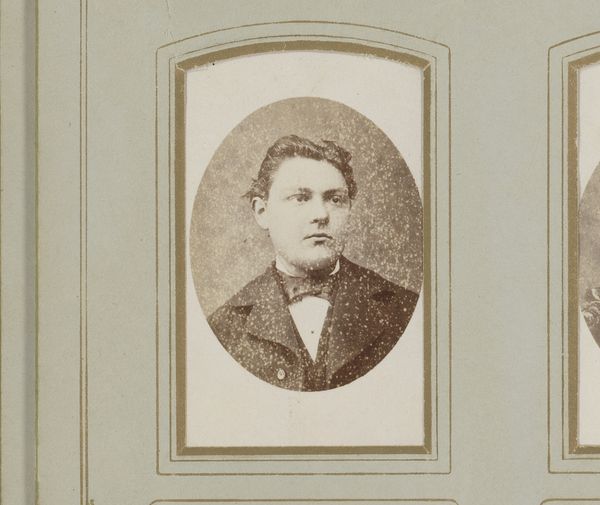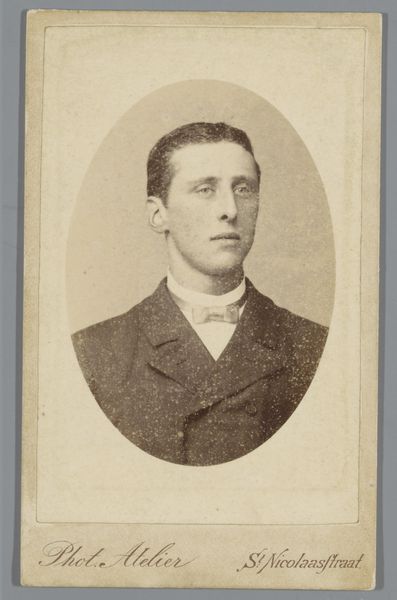
Donohue, from the Old Judge series (N172) for Old Judge Cigarettes 1887 - 1890
0:00
0:00
drawing, print, photography, gelatin-silver-print
#
portrait
#
drawing
#
still-life-photography
#
16_19th-century
#
photo restoration
# print
#
impressionism
#
baseball
#
photography
#
gelatin-silver-print
#
19th century
#
men
#
portrait drawing
#
athlete
Dimensions: sheet: 2 11/16 x 1 3/8 in. (6.9 x 3.5 cm)
Copyright: Public Domain
Curator: There’s a softness to this piece, a gentle quality, even though it's a commercial photograph. Editor: It's a fascinating intersection of commerce and culture. What we have here is "Donohue, from the Old Judge series (N172) for Old Judge Cigarettes," created sometime between 1887 and 1890 by Goodwin & Company. You can find it in the Metropolitan Museum of Art’s collection. Curator: The gelatin-silver print really emphasizes that bygone era, doesn't it? There’s a sepia wash over everything that reminds you this image comes from a different time. Baseball imagery takes me back to nostalgic times, too. Editor: Baseball cards such as this were a clever marketing ploy. This image is more than just a picture of an athlete; it’s an emblem of American identity in the late 19th century. Think about it—a rising sport, mass-produced images, and the popular habit of smoking. Curator: You’re absolutely right. It feels so innocent and charming on the surface, but underneath, it speaks to the rise of consumerism and mass culture. The tie, I think, represents success and pride. Editor: The name "Donohue" scrawled across the image turns him into an approachable, almost familiar figure, which surely increased sales and spoke to the general sportsmanship of the 19th century. The "Old Judge Cigarettes" stamp acts as the seal of consumer approval, in a way. Curator: These sorts of items show the development of baseball into something intrinsically American, using public figures for promotion. Donohue wasn't just a face; he was part of this narrative that created sports heroes for generations. Editor: Looking at it now, removed from its original context, the photograph takes on a life of its own. It is an icon representing that gilded era in United States History. Curator: Exactly. I initially just noticed the overall aesthetic, but you’ve expanded the context for a much deeper exploration. Editor: And your observations led me to contemplate the immediate impact that commercial pressures had in shaping cultural narratives, one photograph at a time.
Comments
No comments
Be the first to comment and join the conversation on the ultimate creative platform.
